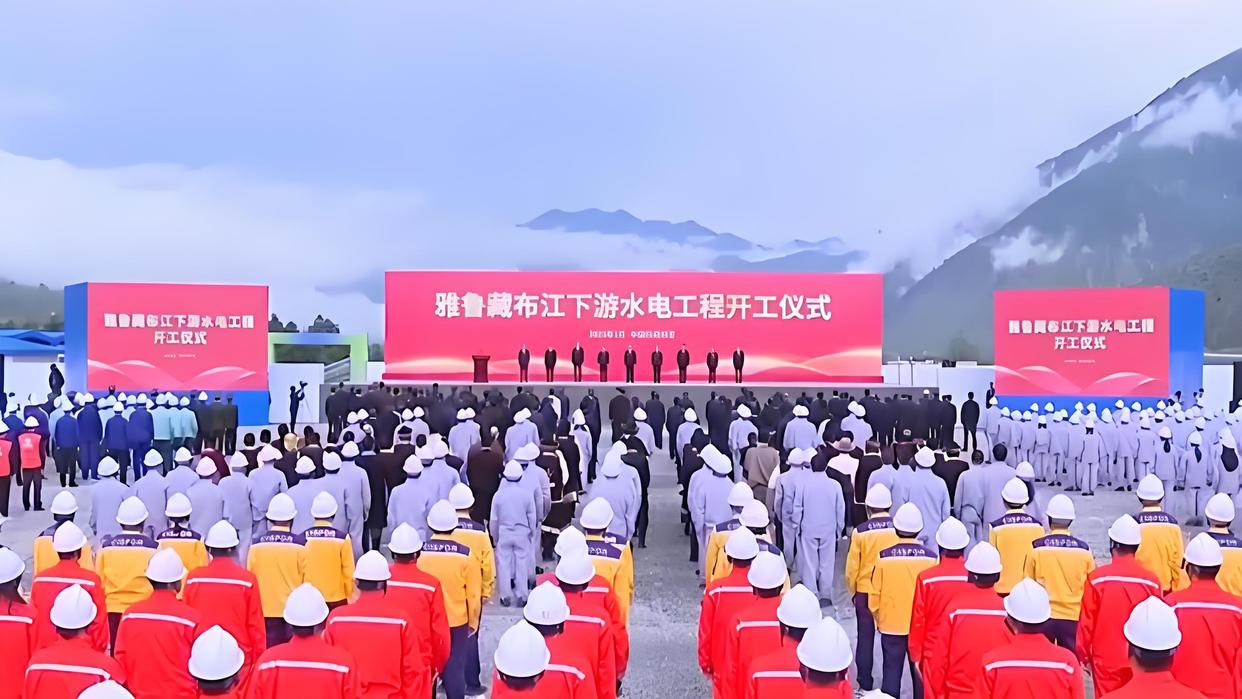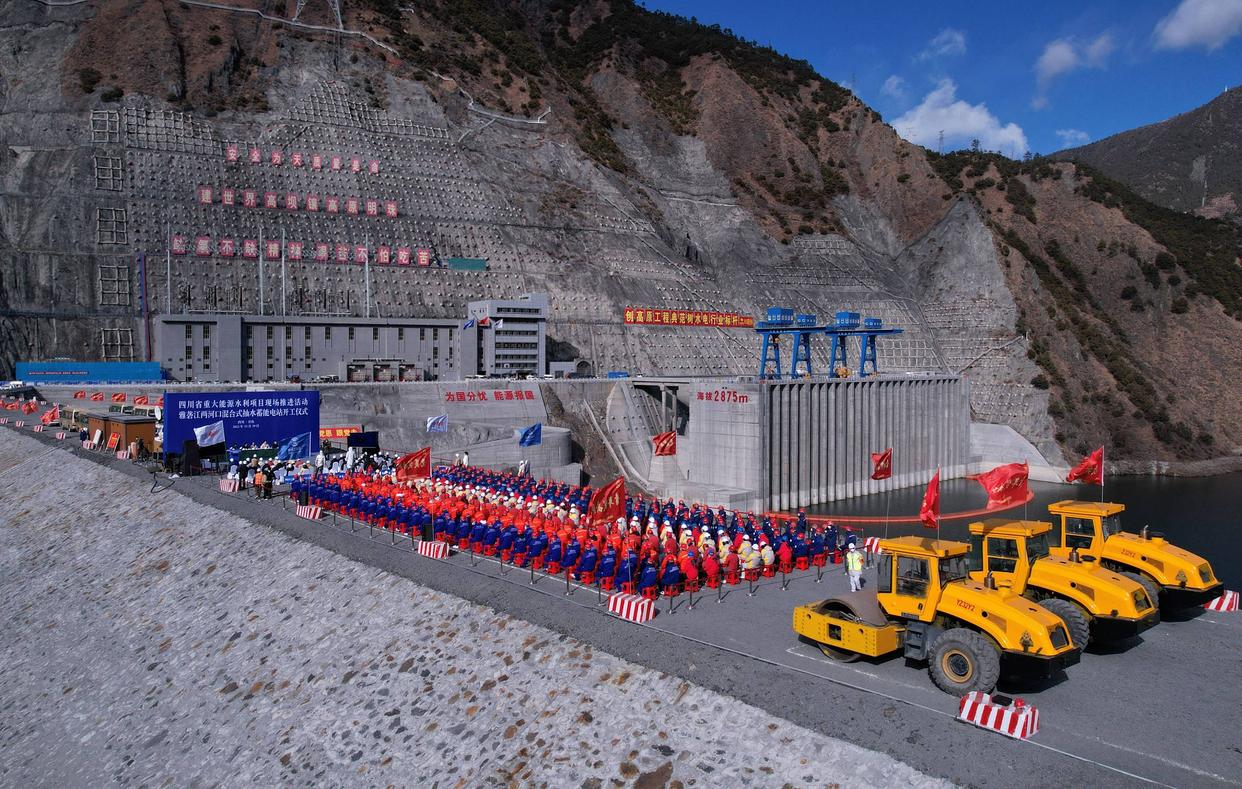
Recently, a blockbuster news that is enough to rewrite our country's energy pattern has made a shocking appearance —— The hydropower project in the lower reaches of the Brahmaputra River with a total investment of about 1.2 trillion yuan has officially started! The installed capacity is 70 million kilowatts, and the annual power generation is 300 billion kWh, which is equivalent to the annual electricity consumption of 900 million people. This world-class project will reduce carbon emissions by 300 million tons per year and drive a 15% increase in Tibet's GDP.
Such a huge investment scale instantly ignited the enthusiasm of the A-share investment circle, and on July 21, the concept of Yaxia Hydropower rose at the beginning of the market, and individual stocks set off a wave of daily limits. 20 shares including Jikang Technology, Wuxin Tunnel Installation, Subote, China Power Construction, Tibet Tianlu, Poly United, and Gao Zheng Minbao rose by the limit.
So, what investment opportunities are hidden in this project?
Redefined "Super Engineering"
The hydropower project in the lower reaches of the Brahmaputra River, an existence that shocks the world in terms of investment scale, has a total investment of about 1.2 trillion yuan, which is like a boulder invested in the economy and infrastructure lake, stirring up a thousand waves 。
How "big" is this project?
It is equivalent to 5 Three Gorges Projects: The Three Gorges were the century project built by the whole country, with a total dynamic investment of 248.5 billion yuan. The investment in the Brahmaputra River project is five times that of it. More "burning" than Beijing Daxing Airport: Daxing Airport is an "investment behemoth" in the civil construction industry, with an investment of 100 billion yuan. And this hydropower project is equivalent to 12 times that of it. The "super leverage" that leverages Tibet's economy: 1.2 trillion yuan of investment, equivalent to 12 times Tibet's annual GDP in 2024. This is not a power station being built, this is installing a "development turbine" for Tibet.
In addition to the large scale of investment, the "gold content" of this project is also very high: the annual power generation is 300 billion kWh, which is enough for 900 million people to use it for a year. Reducing carbon emissions by 300 million tons per year is equivalent to planting billions of trees. Overcoming world-class technical problems, damming in the 9-degree earthquake zone, intelligent ecological protection, etc., the technical difficulty is directly full.
This is not an ordinary hydropower station, but a "national heavy weapon" integrating energy, ecology, science and technology, and economy, and a "needle" for China's infrastructure and energy pattern in the next few decades.
Rewrite the ceiling of water and electricity
The lower reaches of the Brahmaputra River hydropower project have also shown amazing strength in terms of installed capacity and power generation, redefining hydropower engineering "Ceiling" height.
Let's take a look at a key indicator: installed capacity
The planned installed capacity of the lower reaches of the Brahmaputra River hydropower project is 70 million to 81 million kilowatts, while the Three Gorges hydropower station we are familiar with is 22.5 million kilowatts, that is, it is equivalent to 3.6 Three Gorges!
Looking at the world's second-largest Itaipu Hydropower Station, the installed capacity is 14 million kilowatts, which is only about one-fifth of it in front of the Brahmaputra River. The gap is clear at a glance. It's like comparing performance to a mobile phone and a supercomputer, not on an order of magnitude.
Let's look at the annual power generation
What does the Brahmaputra project mean when it comes to annual power generation of 300 billion kWh? Enough to meet the electricity needs of 300 million households (about 900 million people) for a year; accounting for 4.5% of the country's total electricity consumption in 2024; In other words, every 20 kilowatt-hours of electricity in the country may come from this hydropower station at one time.
It is not only a "large power generator", but also an important pillar of the national power supply, especially in the context of large fluctuations in new energy sources such as wind power and photovoltaics, it can also play a role in stabilizing the power grid and ensuring the safety of power supply.

Jingtai Analysis|Five major sectors hide investment opportunities
With a total investment of 1.2 trillion yuan, this project is one of the most important super projects in China's infrastructure and energy sector in the next decade. It is not only of great significance in power generation, environmental protection and strategy, but more importantly, it has also driven the explosive growth of multiple industrial chains.
Let's start with five sectors to help you figure out which investment directions are really worth paying attention to:
1. Main construction: the "heart" of the project, accounting for the largest proportion of investment
First of all, let's take a look at the "heart" of the whole project - the main construction link, which includes construction engineering, equipment installation, metal component installation, etc., accounting for 65% of the total investment of the entire hydropower station, that is, about 669.2 billion yuan!
In this field, China Power Construction and China Energy Construction are the two most core players:
Power China: The "big brother" in the field of hydropower, it has participated in national projects such as the Three Gorges, Xiaolangdi, and Ertan, and its technical strength and project experience are leveraged.
China Energy Construction: The "national team" in the field of power construction, with a market share of more than 30% in hydropower construction, should not be underestimated.
2. Cement building materials: cement is not an ordinary material, it is "just needed"
The construction of hydropower stations has an astonishing amount of concrete. Taking the Three Gorges as an example, a total of 16 million tons of cement were used. The installed capacity of the lower reaches of the Brahmaputra River is 2.7 times that of the Three Gorges, and the total cement consumption is expected to exceed 40 million tons, with an average annual demand of about 2.84 million tons. This is 30% of Tibet's average annual cement production in the past five years!
In this field, Tibet Tianlu is a leading local enterprise, with an annual cement output of 3.14 million tons and a regional market share of nearly 40%. As a local enterprise, it has multiple advantages such as short transportation radius, more policy support, and strong geographical advantages.
3. Civil explosion project: blow up "hardcore" opportunities
The lower reaches of the Brahmaputra River are steep, with heavy excavation tasks for tunnels, bridges and bedrock, and huge blasting projects.
In this segment, Gao Zheng Civil Explosion is the local "civil explosion leader" in Tibet, providing integrated services of "production-sales-transportation-blasting", with first-class blasting qualifications, and the industry threshold is extremely high. As early as 2022, the company established the "Yaxia Hydropower Station Development Leading Group" to actively connect with project parties and is very likely to be deeply involved in the blasting process in the future.
4. Foundation treatment: soft soil becomes hard soil, technology is king
Hydropower stations are mostly built along rivers, and the foundation is mostly soft soil, which is difficult to deal with. In particular, the formation permeability coefficient and poor drainage performance in Tibet have extremely high requirements for foundation treatment technology.
In this field, Shanghai Harbor is an industry leader, with a number of patented technologies such as "high vacuum densification method", which solves the pain points of high cost of traditional foundation treatment, long cycle and heavy pollution. Customers include top engineering companies at home and abroad, such as Power China, China Energy Construction, Hyundai Construction, and Boscaris, with high technical strength and market recognition.
5. Transportation and other supporting infrastructure: open up the "last mile"
The lower reaches of the Brahmaputra River are located in the southwestern border and have inconvenient transportation. A large amount of materials and equipment required to build hydropower stations need to be transported by road and railway.
At present, supporting projects such as the Sichuan-Tibet Railway, the Yunnan-Tibet Railway, and the Chamo Highway are accelerating, and more transportation infrastructure projects will be launched in the future.
In this field, Zhengping Co., Ltd. is the "old face" of high-altitude construction, with first-class qualifications and rich experience in highway and municipal engineering. Central enterprises such as China Railway, China Railway Construction, and China Communications Construction, as the "national team" of transportation infrastructure, will also show their skills in this round.
This project is not a short-term speculation, but a triple drive of national strategy + long-term infrastructure + green energy, with the characteristics of high threshold, high barriers and high growth. Key enterprises in these five sectors can be put on the investment watch list.





